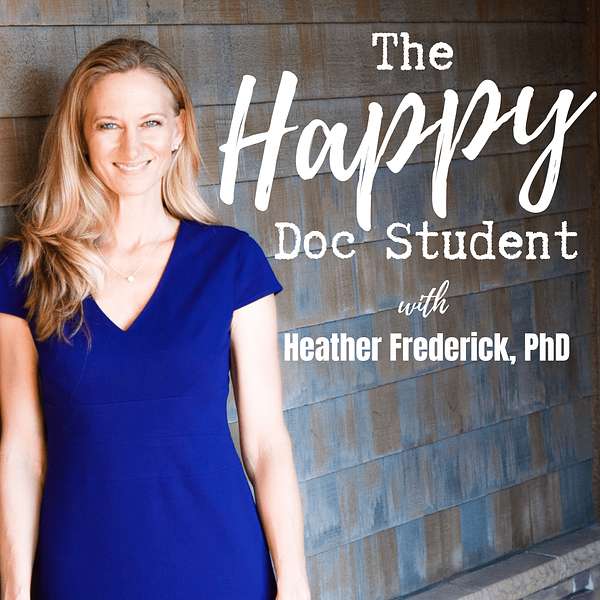
Happy Doc Student Podcast
Feeling alone, frustrated, confused? Thinking of throwing in the towel? Founded on the belief that you can realize your dream of becoming a doctor with your sanity, health, and relationships intact, the Happy Doc Student Podcast delivers inspiration through academic wisdom and esoteric insight. It's no secret the doctoral journey is a difficult one, but you're not alone; join us and put more JOY in your journey! Note: Many episodes speak simply to managing the stress of being human...not need to be a doc student to benefit!
Happy Doc Student Podcast
The Best Dissertation is a DONE Dissertation with Dr. Melanie Shaw
Send us a text - your number will not show, so if you want a response include an email
#14 The Best Dissertation is a DONE Dissertation with Dr. Melanie Shaw
Dr. Melanie Shaw has her PhD in Education and has spent two decades teaching and serving as an administrator in online higher education settings. She is known for getting students who are stuck at the dissertation writing stage unstuck.
NEWSFLASH: The BEST dissertation is a FINISHED dissertation. Focus on creating a concise and straightforward research study that demonstrates you are worthy of the degree (that is, design a study that meets the criteria of your program; it need not save the world).
Where should an idea originate?
· Let RECENT peer-reviewed published research drive the idea
· In applied programs, a professional need may drive the project, but your project still needs to be grounded in research (and contribute to your field of study)
· Understand that you are creating one puzzle piece in a field of research
· You are not setting out to “prove” something you know; you are gathering knowledge about an unknown (careful if you are setting out to prove something, the bias in your writing will delay you)
Can you write a 6-word sentence or question that captures your topic? If not, it might be too complicated; pause and use the 1-page alignment worksheet
Problem Statement:
· It is likely the single hardest thing you will EVER write
· If it is taking you months, understand why – it is the CORNERSTONE of your entire study
· Do NOT include your purpose here – when you read your problem statement, you should hear horror music in the background
· “We need to know more about…" is NOT a problem
· Finish this sentence: The problem is (fill in the blank) that results in (fill in the blank).
Three questions:
1. What is the problem as documented in the literature (in an applied program, this might be a problem in an applied setting, but you will still need to talk about this in terms used in recent literature and use that literature to inform how you will study this)?
2. Whose problem is it?
3. What happens if the problem isn’t solved?
Purpose: Complete this sentence: The purpose of this (insert type of study) is to (fill in the blank – this should solve the problem).
Research Questions: These should align with the problem and purpose. Further, the answers to these should provide information that may help to resolve the problem.
How to make sure you have alignment: Redundancy is a way to ensure alignment; are you using the same words in the problem statement, purpose, and research questions?
Still stuck? Try out the 1-page alignment worksheet (link below), then have a dialogue with your Chair in real-time
Get the 1-page alignment worksheet here: https://www.expandyourhappy.com/pl/267207
Support this free content: https://www.buzzsprout.com/1547113/supporters/new
Get The Happy Doc Student Handbook: https://www.amazon.com/dp/0578333732
Other resources at: http://Expandyourhappy.com
Want to make my day? Rate, review, subscribe & share with someone you love.